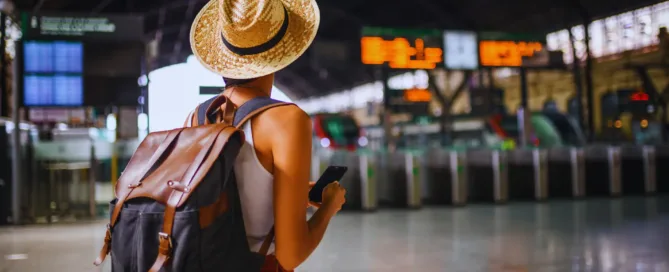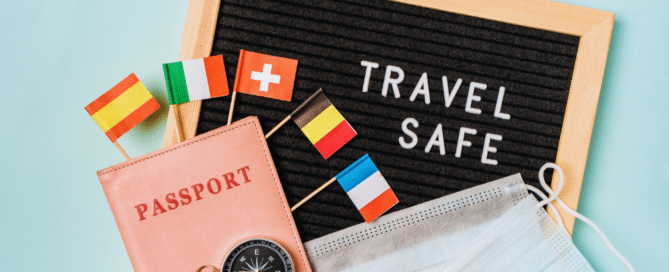Essential Packing Tips for Luxury Travelers: Elevate Your Travel Experience
Packing for a luxury trip requires a blend of practicality and sophistication. To elevate any travel experience, selecting versatile, high-quality essentials is crucial. Each item should reflect both personal style and the character of the destinations.
Luxury travelers must focus on functionality without sacrificing elegance. Choosing the right luggage, high-end skincare products, and lightweight, wrinkle-free clothing can make a significant difference. The right packing strategy not only enhances comfort but also ensures that one is impeccably prepared for any occasion.
Attention to detail matters in luxury travel. Creating a well-considered packing list tailored to the itinerary helps streamline the experience. By prioritizing quality over quantity, travelers can enjoy both style and ease throughout their journey.
Fundamentals of Packing for Luxury Travelers
Effective packing is crucial for luxury travelers aiming for convenience and style. Key elements include planning outfits aligned with travel itineraries, selecting suitable luggage, and adhering to airline policies.
Planning Your Outfits and Travel Itinerary
Luxury travelers should coordinate outfits based on their itinerary to ensure every piece serves a purpose. It helps to select clothing that can easily mix and match.
Utilize high-quality fabrics that resist wrinkling and are suitable for various settings, from business meetings to fine dining.
Consider the climate and activities planned, and pack versatile layers for changing conditions.
Create a list of outfits, detailing accessories to complement each look. This minimizes unnecessary items while maintaining elegance throughout the trip.
Selecting High-Quality Luggage and Organizers
Investing in high-quality luggage is essential for luxury travel. Brands like Louis Vuitton, Tumi, and Rimowa offer elegant options that prioritize durability and style.
Select suitcases with smooth-rolling wheels and a comfortable handle for easy navigation.
Incorporating travel organizers, such as packing cubes and garment bags, optimizes space and keeps items neatly arranged.
These organizers assist in quick access to essentials, reducing hassle during travel.
Understanding Luggage Restrictions and Baggage Policy
Before any trip, reviewing luggage restrictions set by the airline is vital. Most airlines have specific weight limits and dimensions for both carry-on and checked bags.
Checking individual policies helps avoid unexpected fees at the airport.
Knowing the allowance for personal items and extra baggage can assist in planning efficiently. Utilize handy charts available on airline websites to simplify this process.
Creating a Personalized Packing List
A personalized packing list streamlines the packing process and ensures no essentials are overlooked. Start by categorizing items: clothing, toiletries, tech gadgets, and documents.
Luxury travelers might opt for packing lists that specify high-end items, such as skincare products and unique evening wear.
As each trip varies, tailor the list to include any special activities or events planned.
Using digital packing list apps can also aid in managing and adjusting the list as needed.
Essential Items and Smart Packing Strategies
Traveling in luxury requires smart planning and efficient packing. Essential items should be chosen carefully, emphasizing versatility and practicality. Effective packing strategies can maximize space and minimize stress.
Pack Light With Versatile Clothing
When packing for a luxury trip, choosing versatile clothing is crucial. Neutral colors can be mixed and matched easily, offering more outfit options without excessive bulk. Items like a little black dress are ideal, serving for both casual and formal occasions with simple accessory changes.
Lightweight fabrics are also beneficial. They reduce the overall weight while providing comfort and style. A few key pieces, like a blazer, tailored pants, and a stylish top, can create multiple outfits. It is advisable to focus on layering, which allows for flexibility in various climates.
Optimize Space Using Packing Cubes and Accessories
Utilizing packing cubes transforms chaotic luggage into organized sections. They allow travelers to categorize items efficiently, making it easier to locate specific clothing or accessories. Each cube can hold similar items, such as tops or shoes, which streamlines the packing process.
In addition to packing cubes, travel organizers can enhance space optimization. Accessories like compression bags can significantly reduce the volume of clothing. Choosing lightweight, foldable items further contributes to better space management in luggage.
Prioritizing Travel Essentials and Gear
Prioritizing the right travel essentials is key for luxury travelers. A quality travel wallet, for instance, keeps documents organized while offering convenient access to boarding passes and passports. It is advisable to include a power bank for electronic devices to avoid inconvenience during travel.
Additionally, essentials like toiletries should be travel-sized to comply with regulations. Investing in high-end toiletries in small containers can elevate the travel experience. Items like noise-canceling headphones and a quality sleep mask enhance comfort significantly during long flights.
Curating a Luxury Essentials Collection
A thoughtful selection of essentials enhances the luxury travel experience. Key items ensure both style and practicality, crucial for the discerning traveler.
Refined Footwear, Swimwear, and Outerwear Choices
Luxury travelers should prioritize quality when selecting footwear. Refined options include elegant flats, stylish loafers, and versatile heels for city exploration. For coastal destinations, a well-fitted swimsuit complements beach outings. High-end swimwear brands offer chic designs and durable materials.
Outerwear is essential for varying climates. A tailored jacket serves as an ideal layering piece. For outdoor adventures, investing in high-quality hiking boots ensures comfort and stability. Packing lightweight, packable options avoids bulk while maintaining elegance.
Luxury Accessories and Statement Jewelry
Accessories elevate any outfit. Luxury travelers should include finely crafted sunglasses to block UV rays while enhancing their look.
Statement jewelry, such as bold necklaces or designer earrings, adds personality to outfits. Packing a small selection of versatile pieces allows for easy mix-and-match.
A high-quality handbag completes the ensemble and provides functionality. Consider a designer tote that combines style with ample space for essentials. These thoughtfully curated accessories enhance the luxury travel experience.
Toiletries and High-SPF Sunscreen
An essential part of luxury packing involves toiletries. High-end skincare ensures skin remains vibrant and protected.
Travel-sized products from prestigious brands are ideal, offering convenience without compromising quality. He should prioritize moisturizers, cleansers, and serums.
High-SPF sunscreen is a necessity for sun protection. Choose a broad-spectrum formula to shield skin from UV damage while providing hydration.
Consider adding luxurious body lotions and perfumes to elevate daily routines. This attention to personal care reflects a commitment to maintaining one’s appearance even while traveling.
Protective and Comfort Items
Comfort and protection enhance the travel experience. Pack noise-canceling headphones for a serene flight or train journey, making travel more enjoyable.
A reliable universal adapter is vital for seamless connectivity across different countries. This prevents last-minute scrambling for chargers.
Travel pillows and eye masks contribute to restful travel. Quality options ensure comfort during long journeys, allowing for relaxation.
She must consider including a lightweight, durable beach bag for day trips. Prioritizing these items ensures an organized and enjoyable travel experience while maintaining luxury standards.
Tailoring Your Packing for Exclusive Experiences
Luxury travel requires meticulous packing to ensure every moment is memorable. Attention to detail in what to bring can enhance experiences on flights, cruises, and at high-end dining venues.
Essential Items for Flights, Cruises, and Private Yachts
For first-class flights, travelers should prioritize comfort and elegance. Items such as a luxurious travel pillow, noise-canceling headphones, and a lightweight cashmere wrap enhance the flying experience.
On luxury cruises, a smart-casual wardrobe is necessary. Essential pieces include tailored shorts, breathable linen shirts, and chic swimwear. Don’t forget a stylish cover-up for poolside lounging.
For private yacht trips, keep versatile clothing in mind. A combination of swimwear and casual designer pieces is ideal for day trips. When selecting high-end swimwear for these exclusive nautical settings, quality and superior fit can maximize confidence and style. Investing in pieces from luxury designers can ensure elegance, both on the deck and in the water. Additionally, pack a light windbreaker or jacket for breezy evenings on the water.
Packing for Fine Dining and Nightlife
Fine dining calls for well-thought-out outfits. A tailored dress or elegant suit is a must for dinner in upscale restaurants. Accessories should complement the outfit, such as statement jewelry or a sophisticated clutch.
When planning for nightlife, adding a few stylish ensembles will prepare one for exclusive venues. Consider chic separates or a cocktail dress, paired with comfortable yet fashionable shoes for dancing.
Packing a small, elegant shawl or wrap can be useful for cooler evenings. It also serves to elevate any outfit effortlessly.
Adapting for Climate and Destination
Considering the climate is crucial when packing for luxury trips. For warm destinations, lightweight, breathable fabrics like cotton and linen work well. These materials keep travelers comfortable in higher temperatures.
In cooler climates, layering is key. Attention should be given to high-quality jackets, scarves, and sweaters to ensure warmth without sacrificing style.
Researching the destination’s forecast allows for better planning. Travelers should factor in both expected weather and any specific cultural dress codes that could impact their wardrobe choices.










